How to use Eggshells
As a homesteader or anyone working to live a simpler lifestyle, finding ways to get more use from what we have is a daily goal. This article will do just that, showing you how to use eggshells in surprisingly helpful ways both inside and outside of the home.
Raising chickens that are beneficial from roost to shell. Try one of all of these tips and find more uses for what your chickens are giving you.
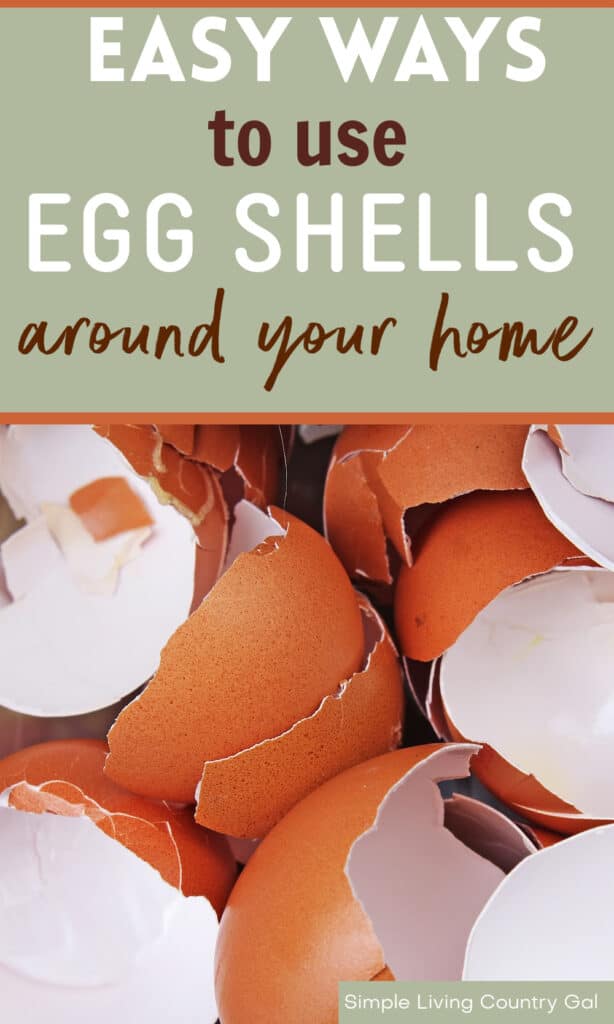
Have you ever thought of reusing your eggshells?
When it comes to living a more self-sufficient lifestyle reusing what you have is a crucial part. Many times people collect, cook, and eat the eggs from their backyard chicken coop and stop there. The great news is there is more you can do with the shells and we are going to break it all down.
Eggshells from backyard chickens can be reused both inside and outside of the home, from the garden to the chicken coop and even in your kitchen. The good news is that there are loads of ways to put those leftover shells to good use. The best news is that you will need zero skills to take advantage of their benefits.
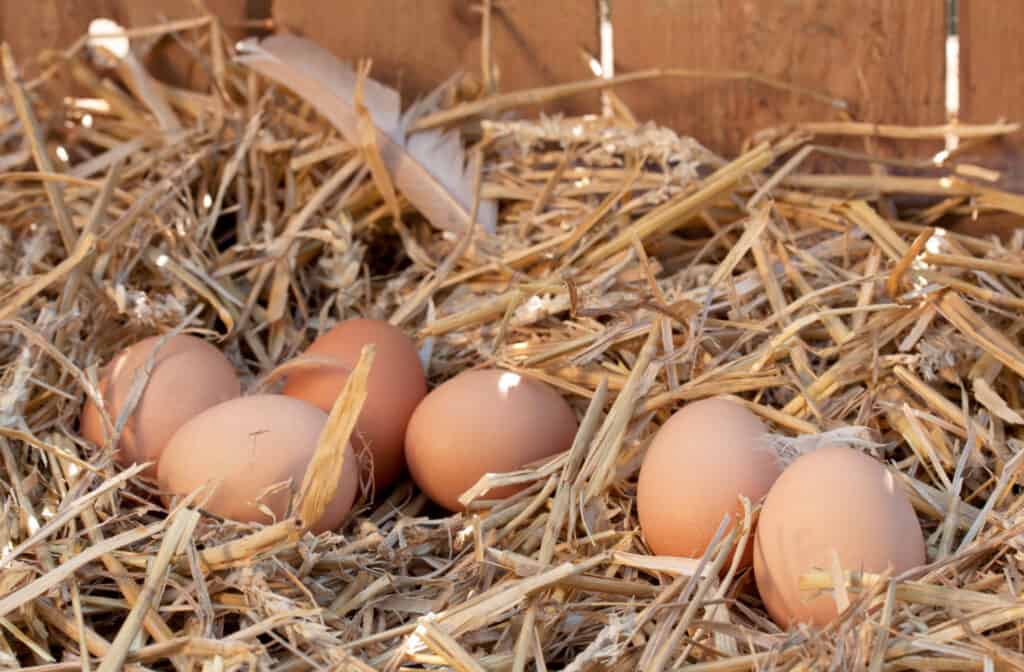
What are the Benefits of Reusing Eggshells?
Eggshells have many trace nutrients in them, this makes them an amazing resource and gives them many helpful uses. From fertilizing plants to an abrasive cleaning solution, you can do more with those leftover shells than you may realize.
How do I prepare eggshells for plants?
Eggshells should be cleaned to remove any leftover debris and allowed to dry. You can lie them out on a paper towel or place them on a rack allowing air to flow around more easily.
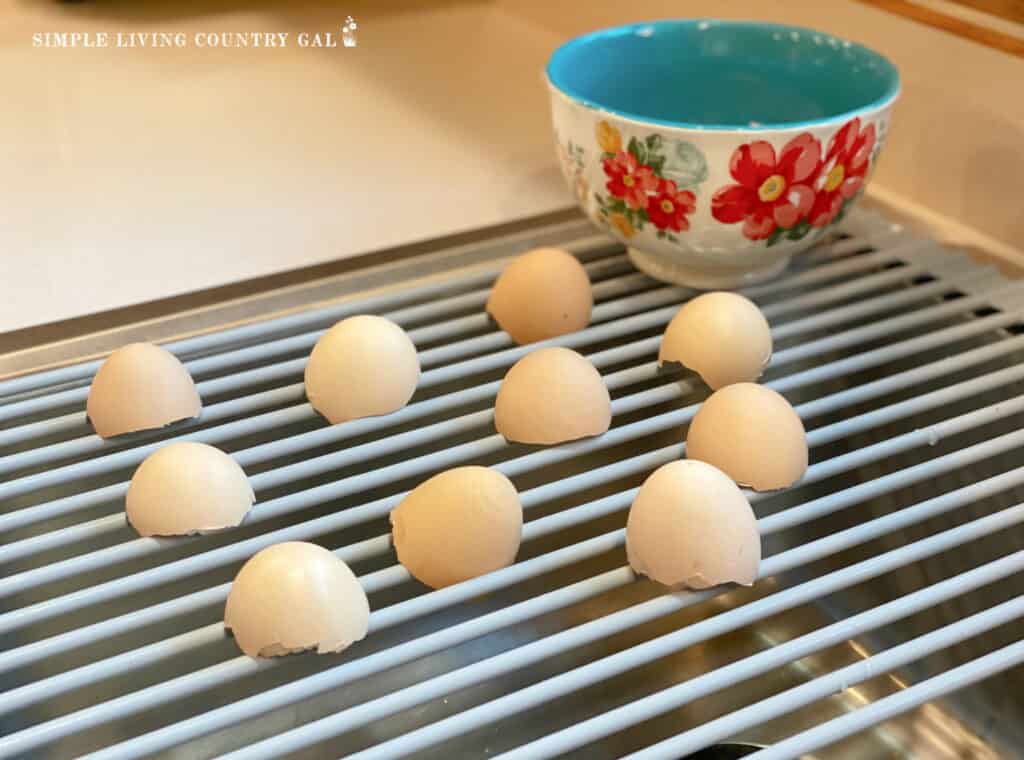
You can also choose to bake eggshells at a low temperature, which will help kill any bacteria that may be present on them.
There are three main areas where eggshells can be used. Let’s break them down.
in the Garden
If you’re an avid gardener, you’ve probably heard about the many benefits of using eggshells. Eggshells are a great source of calcium and can help increase the productivity of many vegetables and flowers.
Crushed shells work especially well with tomatoes, eggplant, and peppers, as the shells’ calcium helps prevent blossom-end rot.
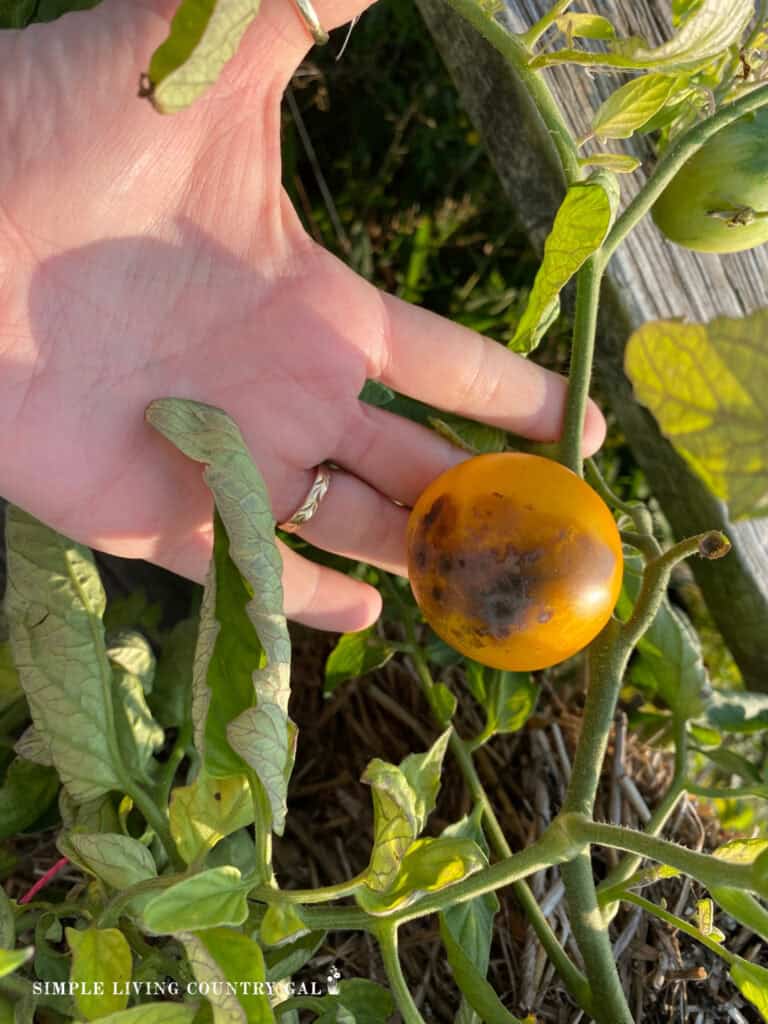
#1. Using eggshells as fertilizer
The high amount of calcium makes shells very useful for gardening and the soil you grow your plants in. Egg shells have calcium carbonate, something your soil needs. Adding them will help to lower the pH of the soil making it more alkaline.
Since many plants prefer alkaline soil, this is our top pick for reusing eggshells. Be sure not to use eggshells with plants that prefer acidic soil such as blueberry bushes.
The best time to add eggshells to a garden is in the fall. This will give them time to break down and compost into the soil so your plant’s roots can take advantage of all their goodness. You can also add them in the spring, just know you may not get the biggest benefits this way.
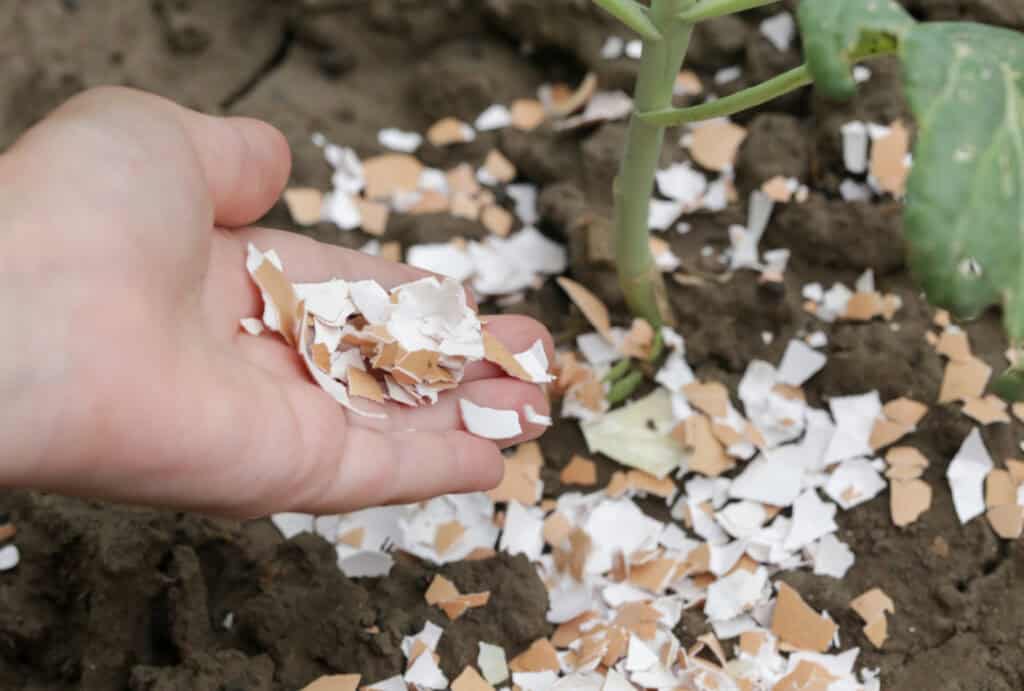
How to Use Eggshells in the Garden:
- Wash the shells to remove any leftover egg residue.
- Allow them to dry.
- Crush or crumble the shells using a rolling pin.
- Add crushed shells to the soil in your garden.
- Work the shells into the ground with a hoe, rake, or your hands.
- Allow to sit over the winter.
- Come spring, plant your garden as usual.
- If adding shells in the spring, put them directly into the hole before planting.
Storey’s Guide to Raising Chickens, 3rd Edition


#2. To Deter Pests
Eggshells are a great way to deter pests like slugs, snails, and cutworms from damaging your plants. This works well in both vegetable gardens and flower beds. The sharp pieces of the shell help to deter pests, keeping them away from your plants.
How to Use Eggshells to Deter Pests:
- Wash the shells to remove any leftover egg residue.
- Allow them to dry.
- Crush shells using a rolling pin being sure to keep them a bit larger for this tip.
- Sprinkle shells around your plants that tend to get damage from pests.
- Re-apply every two weeks for maximum benefits.
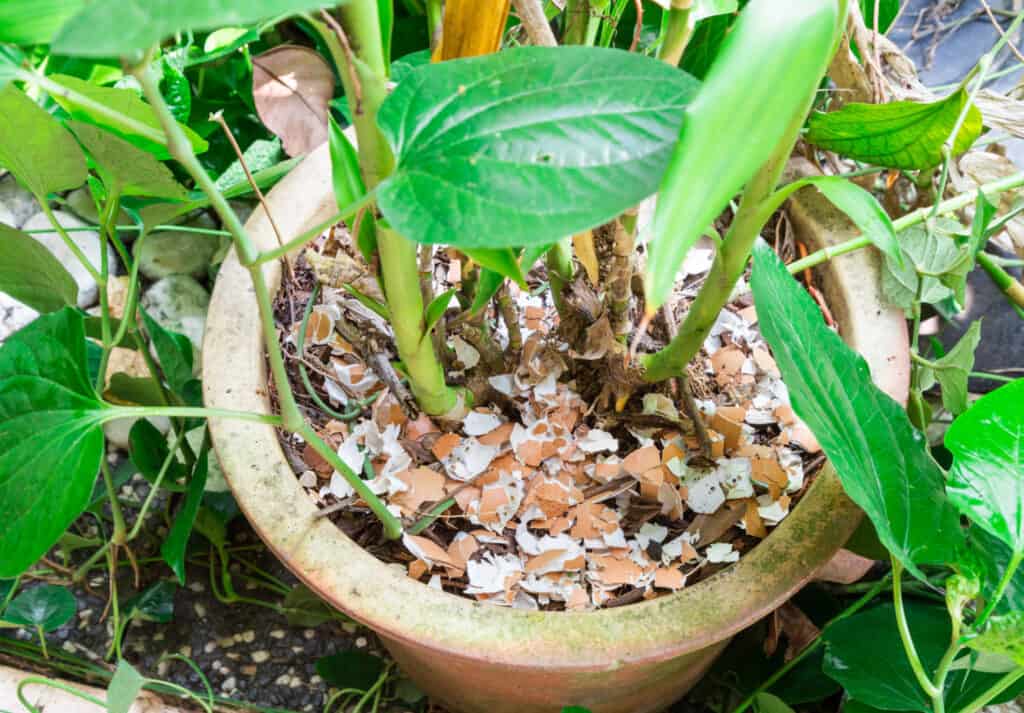
#3. For Planting Seedlings
Egg shell halves are a great container for starting seeds in for your summer garden. Yes, they are small, but until your seeds show they are viable, they are a great free container to use.
How to Use Eggshells to Start Seeds:
- Put a half egg shell into an egg garden with the open side up.
- Fill each shell with potting soil or a peat pellet pod.
- Place a seed in each shell.
- Gently water each seed.
- Allow them to germinate.
- When ready, harden the seedlings off by placing them outside for a few hours each day. This will help them to acclimate to the temperature.
- Transplant in your garden at your specific planting time.
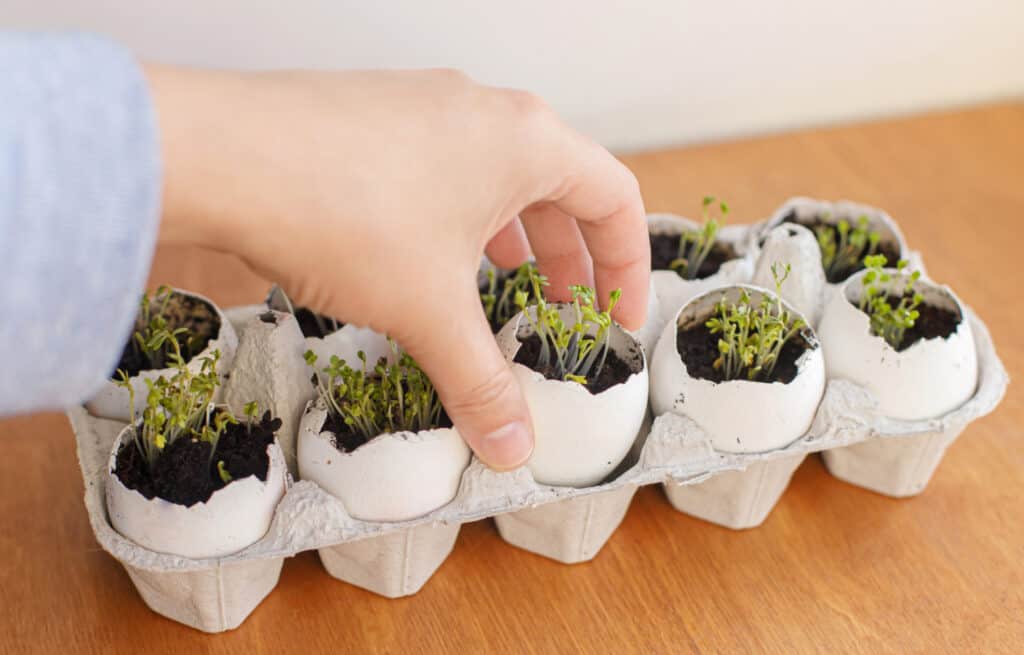
In the Kitchen
Eggshells can be used in the kitchen as a natural scrubber for hard to get rid of stains or residue that can build up on pans.
How to Use Eggshells to Clean Pans:
- Rinse shells and allow them to dry completely.
- Grind the shells into a fine powder.
- Sprinkle this powder onto your pan.
- Add a sprinkle of salt over the shell powder.
- Scrub the pan using a sponge.
- Finish up with a wash and rinse.
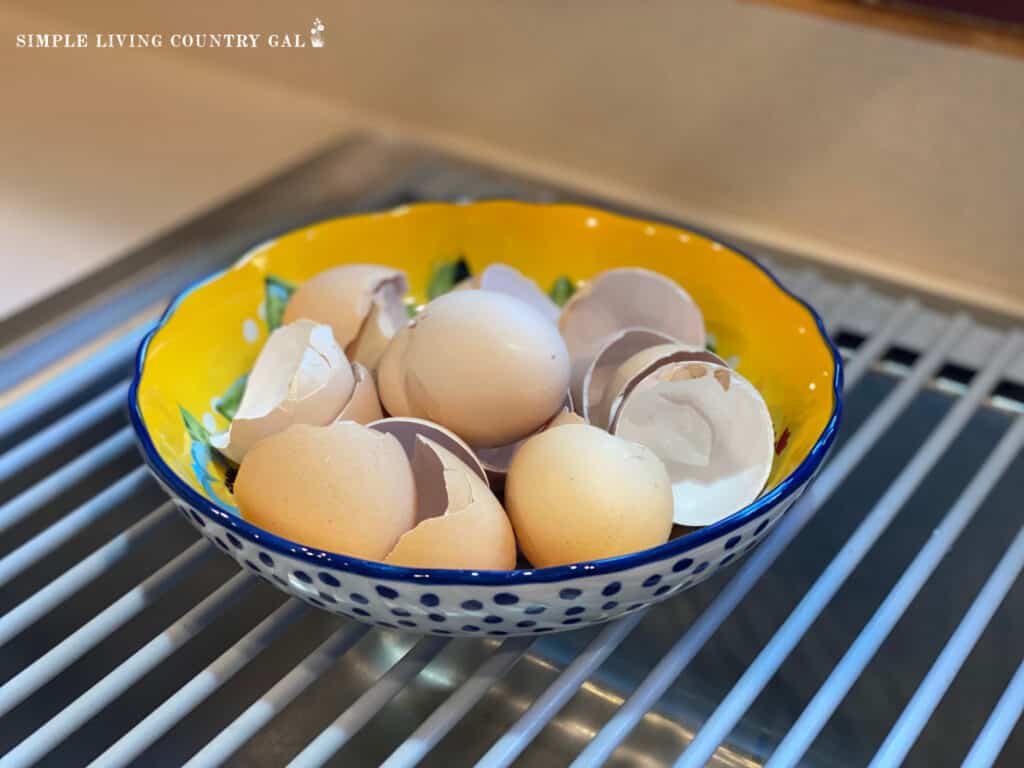
In the Chicken Coop
Eggshells can be used in the chicken coop to help increase egg production. Because of the calcium found in eggshells, it is a great way to provide your flock with necessary nutrients and boost their calcium levels.
How to Use Eggshells in the Chicken Coop:
- Place shells on a baking sheet in a single layer.
- Back at 350° for 5-7 minutes.
- Allow them to cool.
- Crush shells to 1/4-1/2 inch.
- Put shells in a feeder and allow your chickens to eat them free choice.
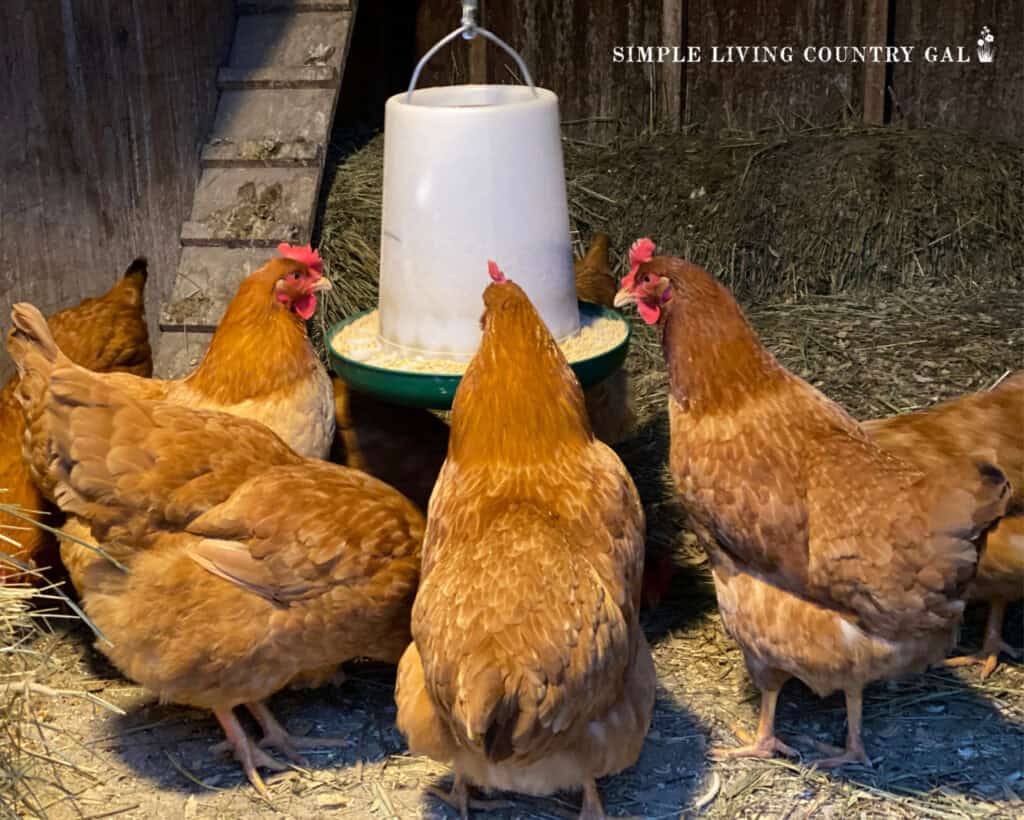
In Your Compost Pile
Eggshells are great when added to compost piles or bins. They will provide extra nutrients, carbon, and calcium. Be sure to crush the shells into small pieces before adding them to your compost to speed up the decomposition.
How to Use Eggshells in the Compost Pile:
- Rinse shells to remove any leftover egg residue.
- Allow them to dry.
- Crush them into smaller pieces.
- Place them in your compost bucket in your kitchen.
- Or take them directly to your outdoor compost area.
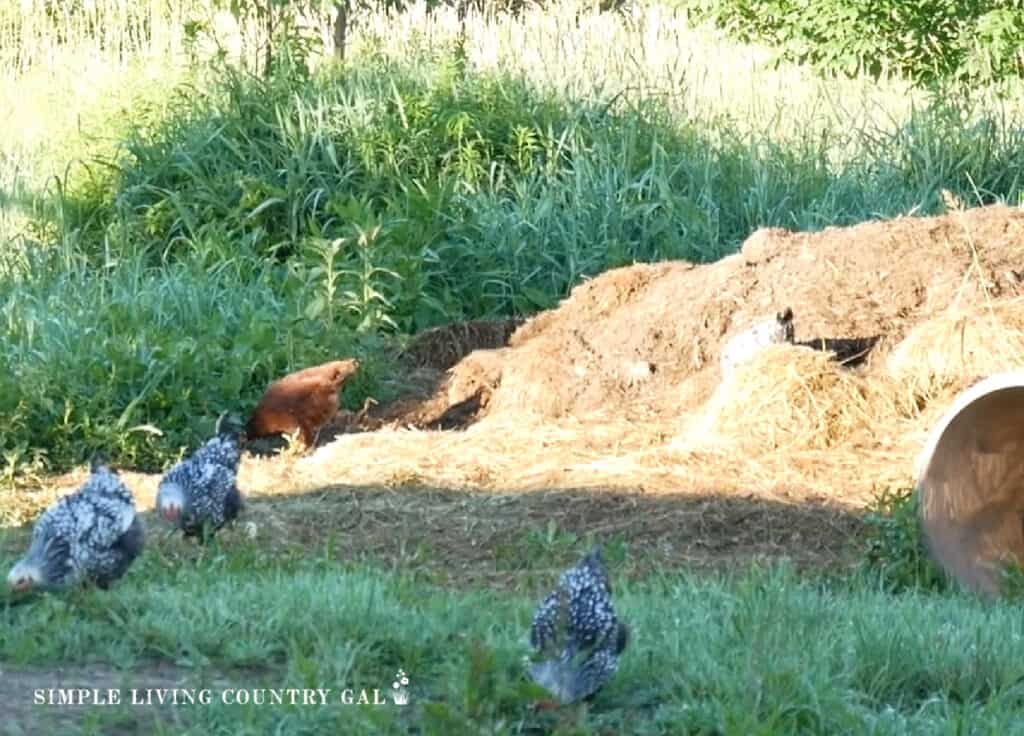
More composting resources:
Eggshells are a versatile and eco-friendly resource that can be used in many different ways around the home. From creating natural cleaning solutions to pest repellents, eggshells are an incredibly handy tool for adding convenience and sustainability to your life.
Keep these tips in mind for how to use eggshells for the next time you have some left over from your coop.





We grind up them up finely and add to worm vermicomposting bin also. Add 2 whole shells with a pound of worm scraps/food and blend/grind together in food processor for a much finer grind the worms can consume and use for grit. The rest we just grind and sprinkle into the bin.